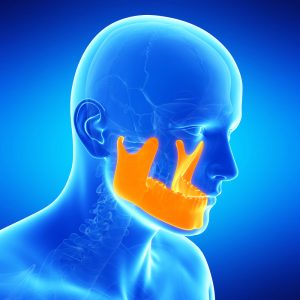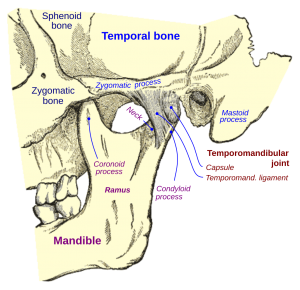Patient Guidelines
1) Reconstruction will fail under forces of destructive grind & clench
2) Reconstruction on unstable jaw joint fails because occlusion is changing
3) Reconstruction is waste of time-money-resources-energy in Atypical Toothache, until Orofacial Pain determines real source of pain.
4) A root canal should not be performed when the question remains is it the outside nerve or insider nerve.
5) A patient with dual bite will never be happy with their occlusion.
OUTSIDE NERVE VS INSIDE NERVE: 1) Root canals on atypical toothache are in question unless a strong reason for root canal can be determine. 2) Dentist defaults to root canal due to intense pain of patient, nice empathy 3) A root canal he has control of urgent situations 4) A referral to orofacial pain specialist is a lot more difficult for patient demanding quick fix 5) Needs to determine if it is outside nerve or inside nerve 6) Root canal irreversibly treats inside nerve 7) Orofacial pain treats outside nerve 8) Ask what quarantee is given if dentist performs root canal 9) Treatment should not proceed until real source of pain is determined
UNSTABLE TMD: 1) Reconstruction of occlusion lies in ability to rebuild the occlusion to repeatable bite 2) Cannot get repeatable bite in completed displace disc or osteoarthritis 3) So if bone turn over in TMD is ongoing, the bite cannot be determined 4) If disc is on and off at different times, the bite is changing 5) OFPS must establish stable bone turn over in OA joint 6) OFPS must recapture medical pole of disc & stabilize it 7) Only then can reconstruction begin
DUAL BITES: 1) If the patient has dual bite, which bite is correct 2) Jaw joint bite does not equal tooth bite 2) No dual bite=85%, b) slight =10 %, c) dual bites=5% 3) Jaw joint bite = muscles most relaxed 4) Tooth bite is where teeth are less stressed 5) Slight dual bite = Dawson technique 6) If muscles are inflamed, making teeth & muscles both happy impossible 6) Moderate Dual bites requires OROFACIAL PAIN SPECIALIST 7) DUAL BITES require highly accurate orthotic 8) Difficulty in relaxing Superior Lateral Pterygoid muscle 9) So difficult requires orthopedic team to relax
DESTRUCTIVE GRIND-CLENCH: 1) Dentistry thinks there are Grinders and Not Grinders 2) Science says there are Three Types: a) mild b) moderate c) destructive 3) Reconstruction is in peril place in destructive grinder 4) Destructive grinding destroys all 4 structures chew system 5) Even invent indestructible crown another structure will break down 6) Reconstruction survival requires reduce destructive grinding to nondestructive 7) Destructive grinding requires 11 tools 8) Eleven tools requires chewing system orthopedic team 9) Reconstruction cannot stand up against destructive grinding 10) Dental Reconstruction treats symptom of disease = wear 11) Orofacial Pain Specialist treats the disease = destructive grinding 12) Patients need demand nightguards during reconstruction
ATYPICAL TOOTHACHE: 1) Three chewing system pathologies can feel like tooth pain a) Outside nerve vs inside nerve b) loss joint space loads posterior teeth c) Inflamed chewing muscle refer into teeth 2) Three medical pathologies feels like toothache a) Inflamed 5th nerve ganglion refers pain teeth b) Inflamed nerve in blood vessel refers tooth c) Several rare pathologies refer into teeth 3) Outside vs inside nerve is hardest diagnose 4) Patients can expect OFPS to diagnose Muscle & Joint refer teeth 5) Patients can expect OFPS to diagnose medical pathologies
RECONSTRUCTION NIGHTMARES:
- When jaw joint is unstable, perfection cannot overcome variable bites.
- The art of occlusal adjustment lies in getting the same bite repeatedly.
- Jaw joint instability means “moderate to severe jaw joint damage”
- Sudden disc displacement or bone loss TMD changes bite
- Dual bite can be hidden problem in occlusion
- Jaw joint stability is a requirement before reconstruction.
- Jaw joint unstable, where do you put mountains (cusps) & valleys (fossas)
- How can dentist be expect to diagnose toothache that is muscle joint problem
- All dental test do not differentiate inside vs outside nerve
Why are some bite reconstruction not successful?
- Bite instability due DUAL BITE: Jaw joint bite or tooth bite
- Bite instaility due JOINT INSTABILITY ? Loss space in joint
- Bite instability due hypermobility ? A loose floppy joint
- Bite instability due emotional instability ? Tension muscles tears at lateral ligament disc
- Bite instability due destructive wear ? Bite today is different bite tomorrow
- Bite instability due spasms chewing muscles ? Relax chewing muscles to get repeatable bite
- Bite instability due Loose & floppy disc
- Bite instability due High anxiety = Tension muscles= poor coordination
HIGH ANXIETY = bites instability 1) Adds tension in muscles 2) Overcontracts Lateral Pterygoid muscle 3) Grind-Clench, Trauma, & tension muscles 4) Pulls and tears lateral ligament disc 5) Displaces disc in TMD
Do you know how much force it takes break tooth ? Only destructive grind clench night has that kind force
Guidelines for Occlusionist and prosthodontist
- Gifted at managing mild moderate grinding
- Gifted at reconstruction perfection
- Placing perfection in destructive grinding mouth will fail
- Treat destruction grinding before exposing reconstructive art to destructive force
- Dentistry answer to destruction is more reconstruction
- Gifted later at playing humpde-dumpde -- until all is lost
- Waste patients valuable resources (teeth, money, time, dentition)
- Destroys even beautiful root canals, crowns, bridges, & implant
- Allows patient to a reasonable investment one time
When teeth are mobile from destructive grinding, where to put mountains & valleys if the destructive force is not managed ?
When you invest in precision dental products, how are you going to protect these investments from destructive force?
Hypermobile joint
- Suspect open locks is name we give Jaw joint when hypermobile
- Erlos Danlos is hypermobility in many joints body
- Breighton score can be use to screen for TMD hypermobility
- How do you get precise jaw joint bite w/ loose floppy TMD ?
- Repeat Open lock-tears lateral ligament-displaces disc = increase
Restricted openings, Complete disc displacement, osteoarthritis must be treated by Orofacial Pain Specialist before reconstruction to achieve the greatest accuracy and comfort
OCCLUSION or BITE STABILITY
Occlusion:
- how cusps and fossa fit & work together
- how mountains & valleys are positioned
0ne who studies accuracy of occlusion or bites
- Occlusionist= dentist graduate Pankey & Dawson & Spears
- Prosthodontist = board certified and residency trained
Guidelines for Occlusionist-Prosthodontis:
- Must refer Orofacial for jaw joint, emotional, or mechanical stability
- Must study occlusion
- Must understand geometry of mouth
- Must be perfectionist
- Must double check jaw joint stability at any reconstruction
- Before reconstruction requires accuracy of bite
- Preventing relapse is as important as accuracy
Important Questions for Prosthodontist-Occlusionist:
- Can you Fix all bites you desire ?
- Did you wonder why your great skills could not overcome all obstacles?
- What are obstacles to great Pankey-Dawson-Spears training?
- How many of your occlusal therapies were successful ?
- How many occlusal therapies removed all symptoms?
- Why occlusal therapies removed some symptoms but not others ?



